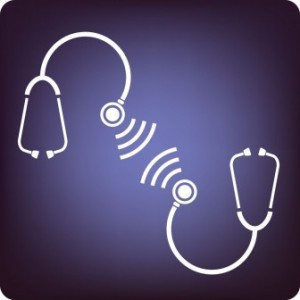 As we approach 2012, we health prognosticators like to forecast what we’ll likely see in 2012. One of the for-certain trends will be the uptake of telehealth programs, which will be publicly, privately, and jointly-funded. The business case is clear for telehealth, both in the U.S. and globally.
As we approach 2012, we health prognosticators like to forecast what we’ll likely see in 2012. One of the for-certain trends will be the uptake of telehealth programs, which will be publicly, privately, and jointly-funded. The business case is clear for telehealth, both in the U.S. and globally.
Jon Linkous, CEO of the American Telemedicine Association, told the mHealth Summit last week that, the “shift in the way healthcare is paid will put providers in driver’s seat when it comes to choosing the best way to deliver healthcare and whether or not to use telemedicine.”
The forces are converging for telehealth to grow, based on sound business models, in 2012.
What’s held back the adoption of telehealth in the U.S. has been a lack of an evidence base. This week, the evidence based for telehealth grew with the announcement by the United Kingdom Department of Health’s Whole System Demonstrator Programme that telemedicine programs could reduce mortality by 45% in the UK. The Programme launched in 2008 and considers itself the largest randomized control trial of telehealth in the world, involving 6,191 patients and 238 general practices in 3 sites in England: Cornwall, Kent and Newham. The trial addressed three chronic conditions — COPD, diabetes and heart failure. At least 12 months’ worth of data for each patient was analyzed, concluding as of September 2010.
This landmark study found that “if correctly delivered,” telehealth could result in a 15% reduction in emergency department visits, 14% reduction in hospital admissions, and — the headline finding — a 45% reduction in mortality rates.
Several developments have also been announced in recent days that point to telehealth’s coming-of-age:
- Earlier this month, the USDA awarded over $30 million worth of grants to telehealth programs in rural areas around the U.S. The monies will support 100 programs in 30 states, according to a press release from the USDA.
- Beijing Ditan Hospital launched a telemedicine network to help stem the spread of infectious disease in China.
- PhoneDOCTOR (PDRx), one of several medical video-consult firms, hit its 30,000th telemedicine consult visit between doctors and patients this week.
- The Veterans Administration continues to expand telemedicine to patients who live far afield from VA Hospitals; this article talks about one program in California, representative of many innovative telehealth projects the VA has implemented.
- Telehealth programs are expanding beyond physical health to mental and behavioral health programs. Breakthrough in California extends psychological care at a distance to nursing home residents.
- Cisco and Walgreens are marketing telemedicine programs to corporate partners who want employees to be able to access health care through worksite clinics.
- The Grand Masonic Lodge of Pennsylvania donated $40,000 to Nemours to fund technology to enable doctors at A.I. DuPont Children’s Hospital in Wilmington, DE, to remotely evaluate young patients at Dover Air Force Base.
Note that the funding and business models for each of these projects varies – some government-funded, others supported solely by the private sector.
Health Populi’s Hot Points: As Linkous pointed out to the mHealth Summit, evolving models of health financing are laying the way and economic rationale for the adoption of telehealth programs by health care providers, from mobile health apps to remote monitoring and telehealth consultations for depression and dermatology.
Why is this the case? Current paying regimes in the U.S., with the exception of the VA/DOD and “closed” health plans like Kaiser, Group Health and Geisinger, are largely based on fee-for-service reimbursement where telemedicine’s costs can’t be absorbed into present coding mechanisms for payment. When payment is organized through accountable care, medical home, bundling and paying-for-performance, providers get reimbursed based on actual quality of care and outcomes — not on “production” or encounters. Frequency of in-person visits, in fact, is discouraged and disincented through these new kinds of payment programs. It is best to keep the patient comfortable, healthy and safe at home — or treated in lower-cost settings — than have the patient re-admitted into the emergency department, hospital bed, or rehab facility. Thus, remote monitoring, mobile health apps and helpful text reminders to take medications, become useful — I’ll emphasize crucial and strategic — complements to in-person visits with providers. Nurse and health educator callers and reminders, medication adherence tools like Vitality GlowCaps, and video-consults with providers (one-on-one or in groups) are being found to be cost-effective and quality-productive for both patients and providers.
While health care forecasts for 2012 will be cloudy on many fronts — from health reform certainties to physician and hospital payment amounts — telehealth is one area where we will see take-up approaching a tipping point in the U.S. Outside of the U.S., where payment for health care is more tightly budgeted and constrained, telehealth is already a no-brainer.




 Thank you, Trey Rawles of @Optum, for including me on
Thank you, Trey Rawles of @Optum, for including me on  I was invited to be a Judge for the upcoming
I was invited to be a Judge for the upcoming  For the past 15 years,
For the past 15 years,